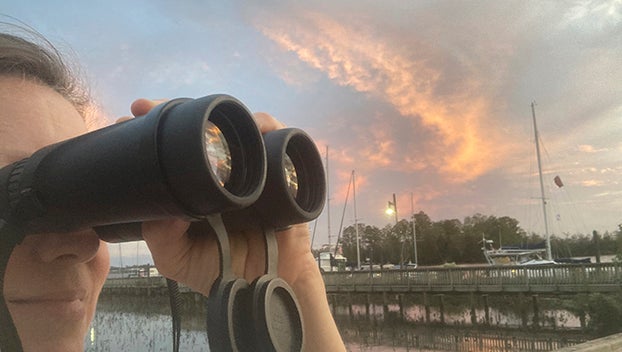Our winter warblers
Published 2:50 pm Tuesday, January 5, 2021
|
Getting your Trinity Audio player ready...
|
Lots of people are familiar with common feeder birds in their yards: cardinals, mourning doves, titmice, and chickadees are some of the oft-seen feeder birds in our area. Blue jays, grackles, and white-throated sparrows also are easily recognized at seed feeders.
If you are familiar with these “yard birds” but would like to expand the number of species you can identify, try looking for warblers next. Warblers are tiny birds that rely mostly on insects for food. Being insect-eaters, most warbler species fly away for the winter, to the Caribbean or South America where the frost-free climate offers year-round vegetation supporting insect life.
However, a few warblers don’t leave our continent entirely, but merely relocate to the coastal plain of the lower South — including Beaufort County. Five warblers are typically present in our area in the winter. Here is what to look for.
The overwhelmingly most common winter warbler of eastern North Carolina is the yellow-rumped warbler, formerly known as the myrtle warbler, and nicknamed the “butterbutt.” Flocks of these warblers roam around within the branches of trees — usually trees that retain their leaves, such as bayberry or wax myrtle, live oaks and laurel oaks, and cedars — picking tiny bugs from twigs and bark.
Yellow-rumps also frequently engage in “hawking,” which is flying quickly out and back from a tree branch to catch small flying insects on warmer winter days. They move in flocks, so you’ll most often see several at a time. Listen for their call which is a dull-sounding “check” uttered every several seconds.
Most any shrubby treed patch between November and March will contain several yellow-rumped warblers making this noise. Call them down by “pishing” — making a whispery “pshwp shwp” noise — and they will fly close to investigate you. Recognize their plumage which is dull striped gray-brown overall, with yellow patches on the rump, tail, and sides.
Often a flock of yellow-rumped warblers will contain other small birds, such as bluebirds, chickadees, and another common winter warbler of our area, the pine warbler. The pine warbler has a bright lime-yellow color to the head, throat and breast, along with a faint whitish eye-ring and usually light bars on the wings. Above the midline, it is dull dun or olive-greenish. Because of this coloration, it is usually very dull seen from above or behind, and very bright lime-yellow seen from underneath or in front! And yes, it is almost always found near pine trees.
Both the pine and yellow-rumped warbler will come to a seed or suet feeder, especially loving peanut suet or peanut hearts.
Three other warblers are typically present but a bit harder to locate for a beginner. These are the palm warbler, recognized easily by its habit of constantly raising and dropping its tail while perched. It has a rusty cap and is gray-brown overall, with usually bright yellow undertail feathers. It will perch in low foliage or on tall overgrown grasses and weed stems, especially in scruffy areas near water such as a marsh or wild patch that has not been bulkheaded. The name “palm warbler” is irrelevant to identification, as it has no great tendency to perch in palm trees versus any other kind of tree or shrub.
The orange-crowned warbler is much less common than either of these, and difficult to recognize for a beginner — perhaps because it has no remarkable “field marks” to speak of, since the orange crown is pretty much invisible. It is a drab, uniform dun color very faintly tinged with olive green, and will sometimes visit a suet feeder.
But take heart. One last winter warbler is also a bit unusual to find, but very easily recognized. This is the zebra-striped black-and-white warbler. This bird is unmistakable: a tiny forager on tree trunks, hitching around them just like a nuthatch would, but marked all over with narrow black and white stripes. I have seen them in January and February in some not very out-of-the-way places: once on the Capitol Square in Raleigh, and another time down at Havens Gardens, at the fishing area by the railroad bridge that crosses the mouth of Jack’s Creek. These little “zebritas” (as they are called in Central America) will be seen more frequently toward spring as they pass through our region on their way north.
All of the winter warblers of Eastern North Carolina will depart in their due time in late spring, to breed in northern forests or the Appalachian mountains. They’ll be replaced by our returning spring and summer warblers: the parula, the prothonotary, the yellow-throated warbler, and more. In a springtime column I’ll cover some of these warm-season warblers and how to see them.
Betsy Kane is a Washington resident who enjoys the outdoors.






